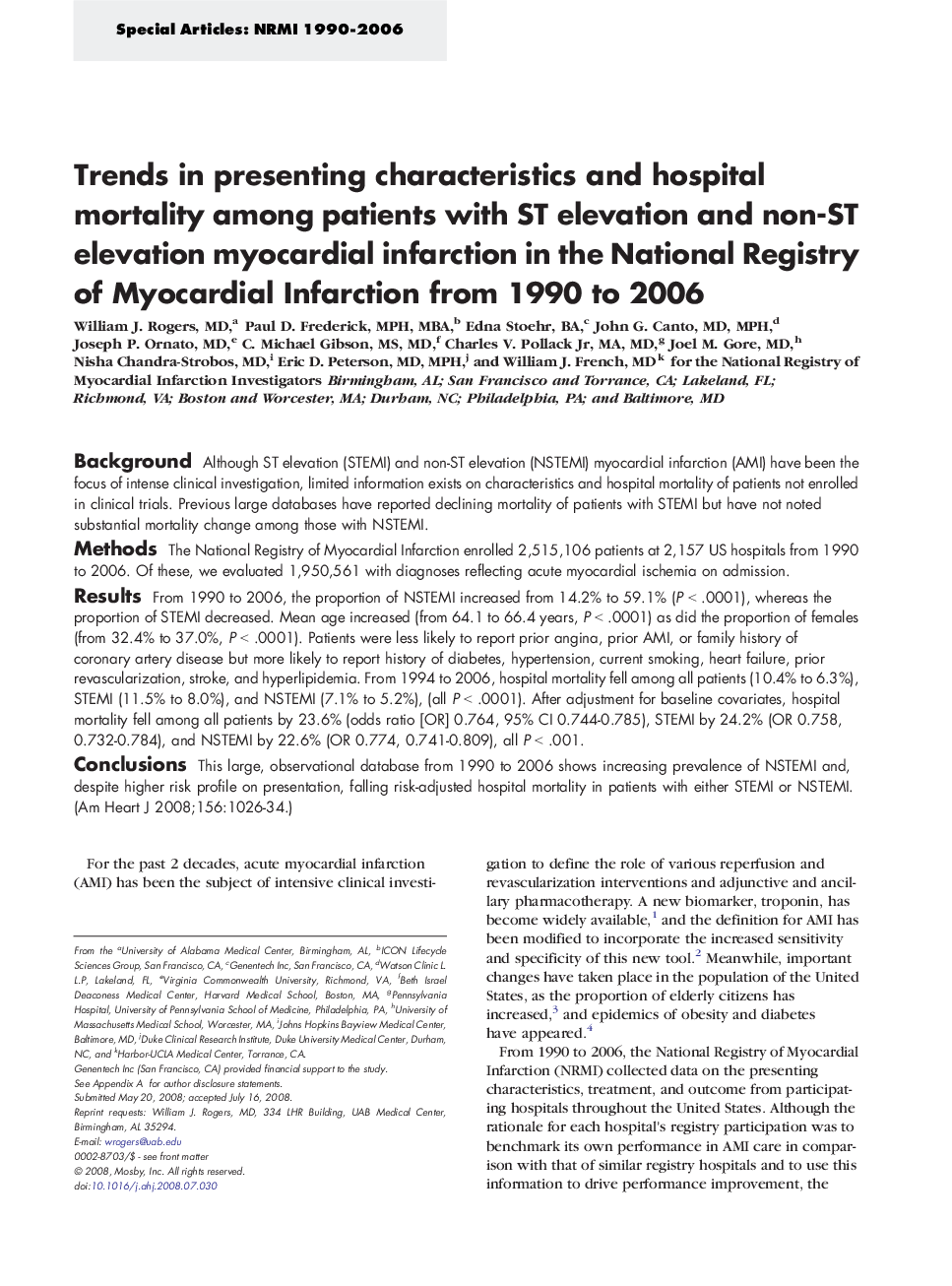| Article ID | Journal | Published Year | Pages | File Type |
|---|---|---|---|---|
| 2849815 | American Heart Journal | 2008 | 9 Pages |
BackgroundAlthough ST elevation (STEMI) and non-ST elevation (NSTEMI) myocardial infarction (AMI) have been the focus of intense clinical investigation, limited information exists on characteristics and hospital mortality of patients not enrolled in clinical trials. Previous large databases have reported declining mortality of patients with STEMI but have not noted substantial mortality change among those with NSTEMI.MethodsThe National Registry of Myocardial Infarction enrolled 2,515,106 patients at 2,157 US hospitals from 1990 to 2006. Of these, we evaluated 1,950,561 with diagnoses reflecting acute myocardial ischemia on admission.ResultsFrom 1990 to 2006, the proportion of NSTEMI increased from 14.2% to 59.1% (P < .0001), whereas the proportion of STEMI decreased. Mean age increased (from 64.1 to 66.4 years, P < .0001) as did the proportion of females (from 32.4% to 37.0%, P < .0001). Patients were less likely to report prior angina, prior AMI, or family history of coronary artery disease but more likely to report history of diabetes, hypertension, current smoking, heart failure, prior revascularization, stroke, and hyperlipidemia. From 1994 to 2006, hospital mortality fell among all patients (10.4% to 6.3%), STEMI (11.5% to 8.0%), and NSTEMI (7.1% to 5.2%), (all P < .0001). After adjustment for baseline covariates, hospital mortality fell among all patients by 23.6% (odds ratio [OR] 0.764, 95% CI 0.744-0.785), STEMI by 24.2% (OR 0.758, 0.732-0.784), and NSTEMI by 22.6% (OR 0.774, 0.741-0.809), all P < .001.ConclusionsThis large, observational database from 1990 to 2006 shows increasing prevalence of NSTEMI and, despite higher risk profile on presentation, falling risk-adjusted hospital mortality in patients with either STEMI or NSTEMI.
